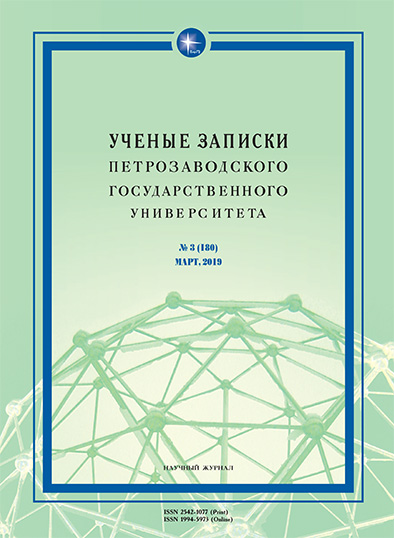ИГРОВАЯ ПЕСНЯ «ХРЕН» В КОМИ И СЕВЕРНОРУССКИХ ТРАДИЦИЯХ:
ВАРИАНТЫ И ТРАНСФОРМАЦИИ
GAME SONG “HORSE-RADISH” IN KOMI AND NORTH RUSSIAN TRADITIONS:
VARIANTS AND TRANSFORMATIONS
Author(s): Tatiana Stepanovna KanevaSubject(s): Language and Literature Studies
Published by: Петрозаводский государственный университет
Keywords: song and game folklore; “horse-radish” plot; variability; folklore bilingualism; local traditions; textual criticism
Summary/Abstract: Observations on the variability of one of the folklore song plots occurring in the European North in Russian and Komi traditions – thegame song “Horse-radish” – are presented in article. Material for the research has been revealed in the Folklore Archive of PitirimSorokin Syktyvkar State University, in the collections of Komi and Russian folklore. Single variants from the Russian traditions havebeen written down in the lower Vychegda (Lensk and Vilegodsky districts of the Arkhangelsk region) and the lower Pechora (theNenets Autonomous Area of the Arkhangelsk region). Numerous records have been made in the South of the Komi Republic (thebasins of the Sysola and Letka). The ethnic Komi borrowed and creatively assimilated this plot. The comparative textual analysisof the variants of the game song “Horse-radish” plot has been carried out. The variants which occurred in the Komi tradition arenotable for adding the dance tune motives to the plot. It has ensured their popularity and longevity in the Komi game culture. In theRussian traditions, the recollections of this song’s existence have been rarely recorded. A peculiar “transformed” variant of the songhas been found in the round dances repertoire of Ust-Tsilma “hill” (the tradition of the Russians in Pechora). The plot of purchasing“radish” from a “grandmother” is related to a group of “Horse-radish” works. This plot accompanied an ornamental round dance. TheKomi and the Russian (Ust-Tsilma) variants differ from the “classical” variant of this song. They reflect the results of the poetic textadaptation both in its native and the other national environment, as well as its inclusion into a new functional and household context.
Journal: Ученые записки Петрозаводского государственного университета
- Issue Year: 2019
- Issue No: 3 (180)
- Page Range: 22-27
- Page Count: 6
- Language: Russian

